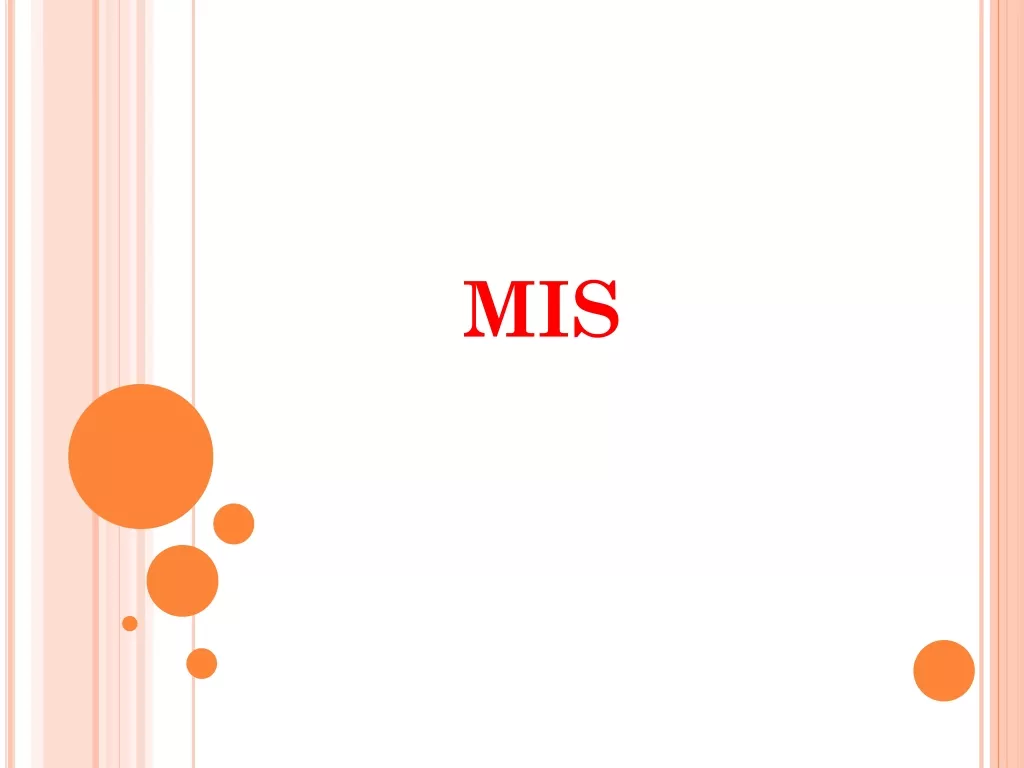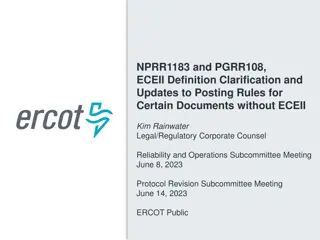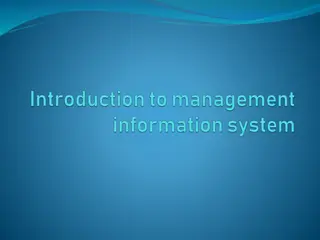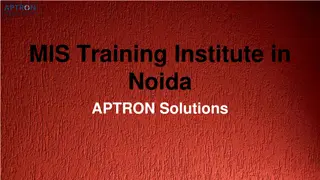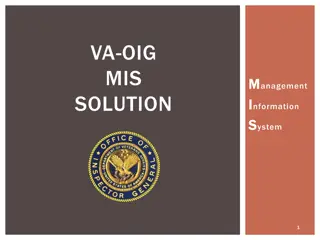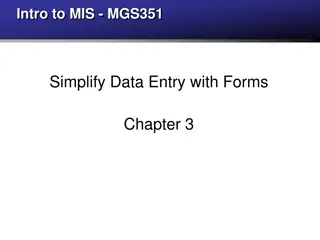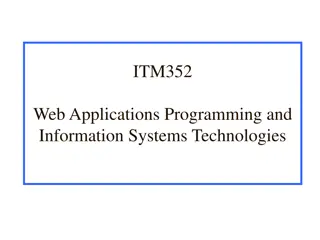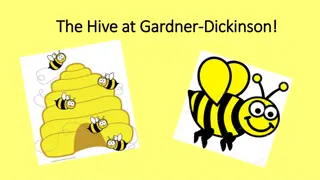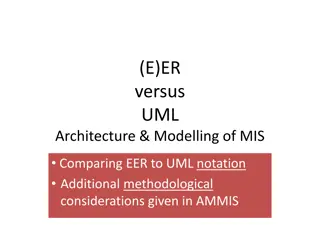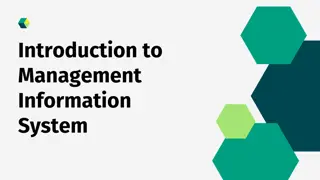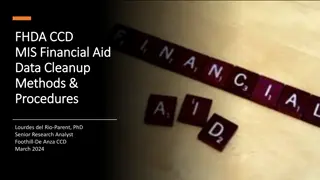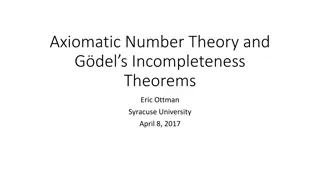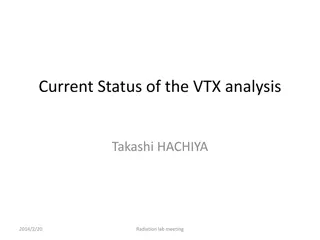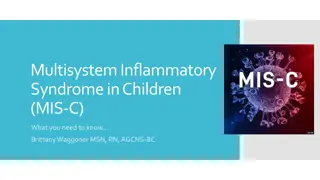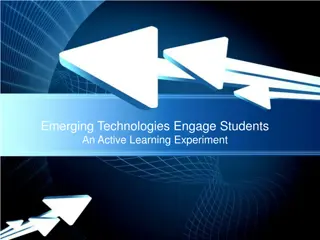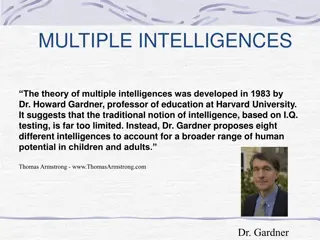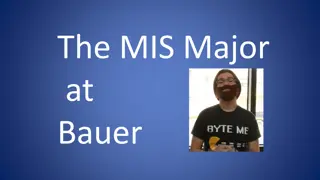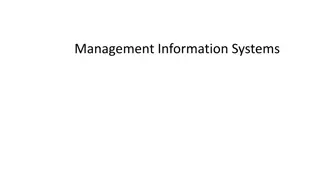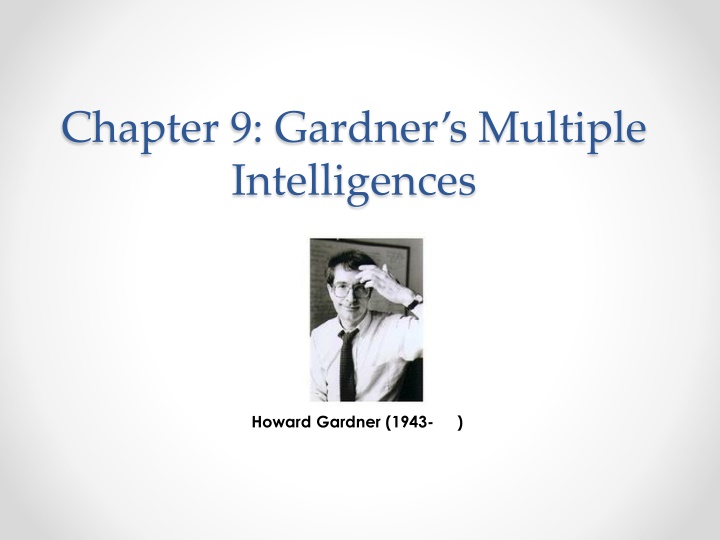
Understanding Gardner's Theory of Multiple Intelligences
Explore Howard Gardner's Theory of Multiple Intelligences, which highlights nine different types of intelligences that individuals possess, including verbal/linguistic, logical/mathematical, visual/spatial, bodily/kinesthetic, naturalistic, musical, interpersonal, intrapersonal, and existential intelligence. Gardner emphasizes the importance of recognizing and nurturing these varied intelligences in educational settings to enhance learning outcomes.
Download Presentation

Please find below an Image/Link to download the presentation.
The content on the website is provided AS IS for your information and personal use only. It may not be sold, licensed, or shared on other websites without obtaining consent from the author. If you encounter any issues during the download, it is possible that the publisher has removed the file from their server.
You are allowed to download the files provided on this website for personal or commercial use, subject to the condition that they are used lawfully. All files are the property of their respective owners.
The content on the website is provided AS IS for your information and personal use only. It may not be sold, licensed, or shared on other websites without obtaining consent from the author.
E N D
Presentation Transcript
Chapter 9: Gardners Multiple Intelligences Howard Gardner (1943- )
Based on his research, Gardner established eight criteria for identifying the seven separate intelligences. Later Gardner added two more to have nine intelligences.
Key Points of Gardner's Theory: All human beings possess all nine intelligences in varying degrees. Each individual has a different intelligence profile. Education can be improved by assessment of students' intelligence profiles and designing activities accordingly. Each intelligence occupies a different area of the brain. The nine intelligences may operate in consort or independently from one another. These nine intelligences may define the human species.
The Nine Intelligences Verbal/Linguistic Logical/Mathematical Visual/Spatial Bodily/Kinesthetic Naturalistic Musical Intelligence Interpersonal Intrapersonal Existential intelligence (the newly added)
A Close Look at Each Intelligence: Verbal/Linguistic Ability to understand and manipulate words and languages. Teachers can enhance their students' verbal/linguistic intelligence by having them keep journals, play word games, and by encouraging discussion. Linguistic intelligence is highly valued in education and learning environments.
Logical/Mathematical Intelligence Ability to do things with data such as collect, organize, analyze, interpret, conclude and predict. Being strong in this intelligence often implies great scientific ability. These individuals use inductive and deductive logic, numeration, and abstract patterns. Teachers can strengthen this intelligence by: Including critical-thinking activities Using linear outlining Creating science-fiction scenarios Having the students complete logic puzzles
Visual/Spatial Intelligence Ability to form and manipulate a mental model People with this kind of intelligence learn best from visual presentations such as movies, pictures, videos, and demonstrations using models and props They also like to draw, paint, or sculpt their ideas and often express their feelings and moods through art. They are especially good at reading diagrams and maps and enjoy solving puzzles. Teachers can foster this intelligence by using charts, diagrams, videotapes, color, art activities, microscopes and computer graphics software.
Bodily/Kinesthetic Refers to people who process information through the sensations they feel in their bodies. They like to move around, touch the people they are talking to and act things out. They enjoy sports and often can express themselves through dance. Teachers can encourage growth in this area through the use of touching, feeling, movement, hands-on" activities, and allowing students to sometimes squirm and wiggle.
Naturalistic Intelligence Seen in people who can easily recognize and classifies plants, animals, and minerals They are holistic thinkers who recognize specimens and are aware of species such as the flora and fauna around them. Teachers can best foster this intelligence by using relationships among systems of species, and classification activities.
Musical Intelligence Ability to understand, create, and interpret musical pitches, timbre, rhythm, and tones and the capability to compose music. Teachers can encourage this intelligence by playing music for the class and assigning tasks that involve students creating lyrics about the material being taught.
Interpersonal Intelligence The ability to interpret and respond to the moods, emotions, motivations, and actions of others. Requires good communication and interaction skills, and the ability show empathy towards the feelings of other individuals. Teachers can encourage the growth of Interpersonal Intelligences by designing lessons that include group work and by planning cooperative learning activities.
Intrapersonal Intelligence The ability to know oneself. Must be able to understand their own emotions, motivations, and be aware of their own strengths and weaknesses. Teachers can assign reflective activities, such as journaling to awaken students' Intrapersonal Intelligence.
The Ninth Intelligence not Fully Accepted by all Experts: Existential Intelligence The ability to pose and ponder philosophical questions regarding existence, life and death. This intelligence is in the domain of philosophers and religious leaders.
Ideas on how to Apply Multiple Intelligences to the Classroom Verbal/Linguistic Teacher can: Student can: Read content and prepare a presentation for classmates Debate with other students over an issue Present content verbally Ask questions aloud and look for student feedback
Applying Logical/Mathematical Teacher can: Student can: Provide brain teasers or challenging questions to begin lessons. Make logical connections between the subject matter and authentic situations. Categorize information in logical sequences for organization. Create graphs or charts to explain written info.
Bodily/Kinesthetic Teacher can: Student can: Use computers to research subject matter. Create props of their own explaining subject matter Use props during lecture Provide tangible items pertaining to content for students to examine Review using sports related examples (example: throw a ball to someone to answer a question)
Visual/Spatial Teacher can: Student can: Use visuals to explain content such as: PowerPoint Slides, Charts, Graphs, cartoons, videos, overheads, and smartboards. Work individually or in groups to create visuals pertaining to the information such as: Posters, timelines, models, PowerPoint slides, maps, illustrations, and charts
Musical Teacher can: Student can: Play music in the classroom during reflection periods Show examples or create musical rhythms for students to remember things Create a song or melody with the content embedded for memory Use well known songs to memorize formulas, skills, or test content
Interpersonal Teacher can: Student can: Be aware of body language and facial expressions Offer assistance whenever needed Encourage classroom discussion Encourage collaboration among peers Participate in group work to strengthen interpersonal connections Provide peer feedback and peer tutoring
Intrapersonal Teacher can: Student can: Encourage journaling as a positive outlet for expression Introduce web logging (blogs) Make questions welcome Create a positive environment Keep a journal Do individual research on content Create personal portfolios of their work
Naturalistic Teacher can: Student can: Take students outside to enjoy nature while in learning process. Compare authentic subject matter to natural occurrences. Relate subject matter to stages that occur in nature Organize thoughts using natural cycles Make relationships among content and the natural environment
Reference Giles, E., Pitre, S., Womack, S. (2003). Multiple intelligences and learning styles. In M. Orey (Ed.), Emerging perspectives on learning, teaching, and technology. Retrieved from: http://epltt.coe.uga.edu/

